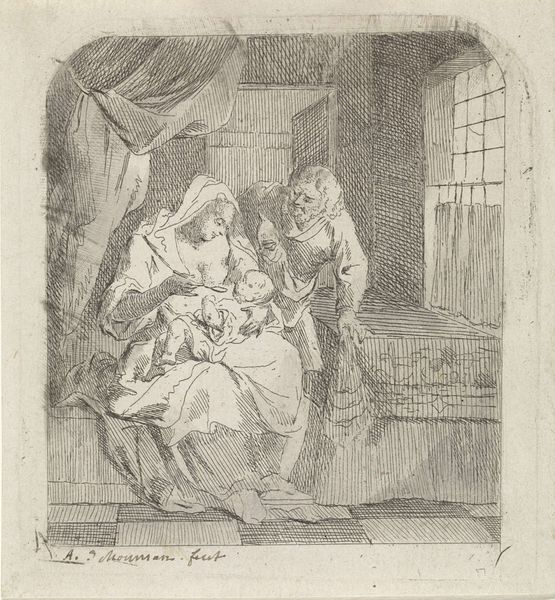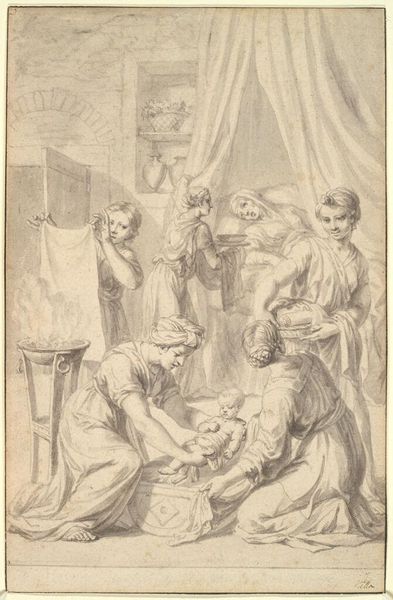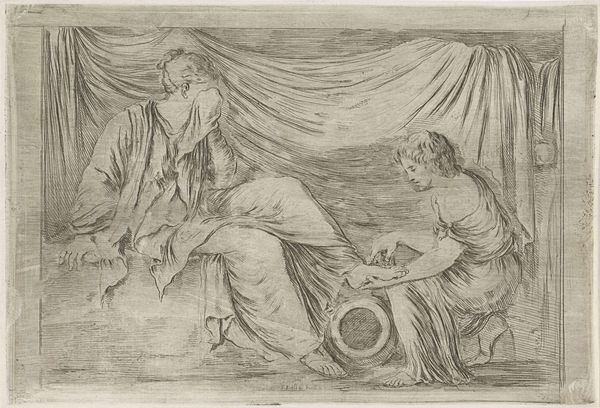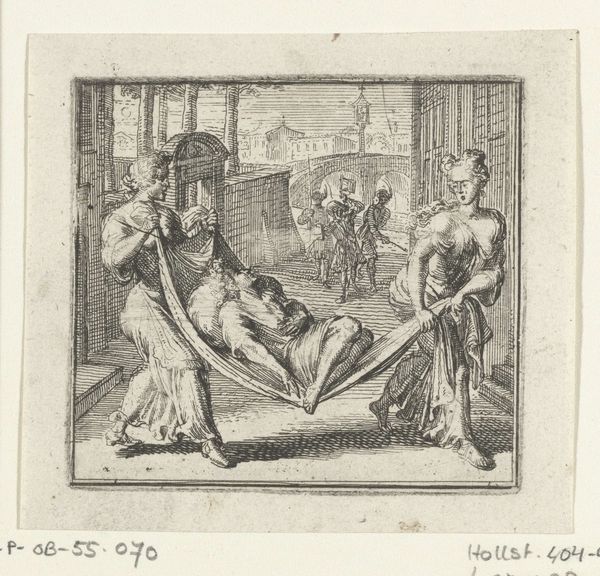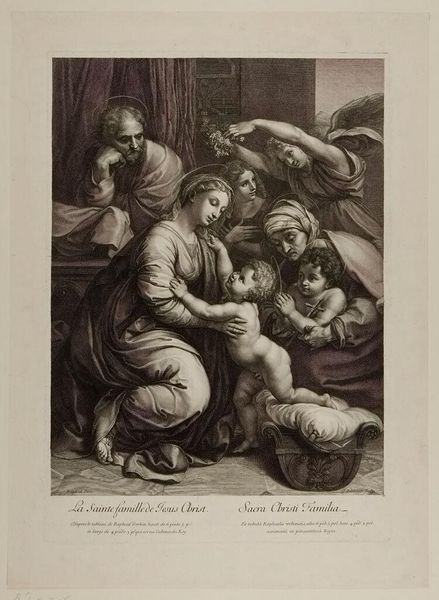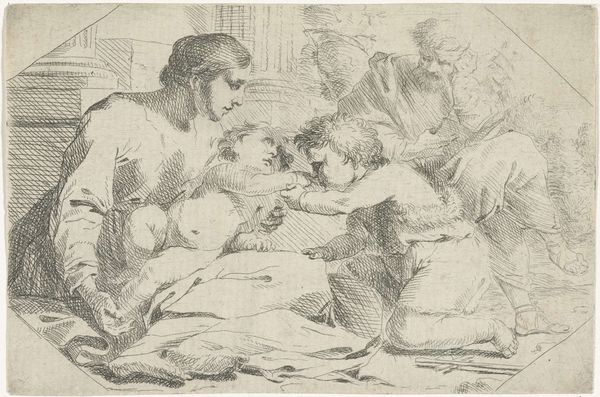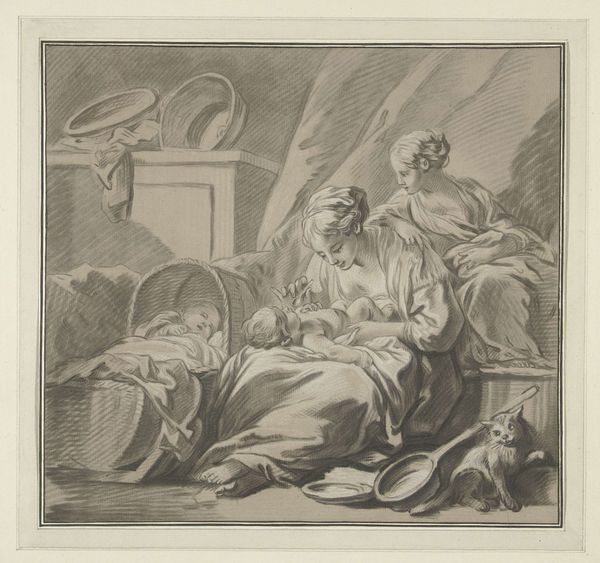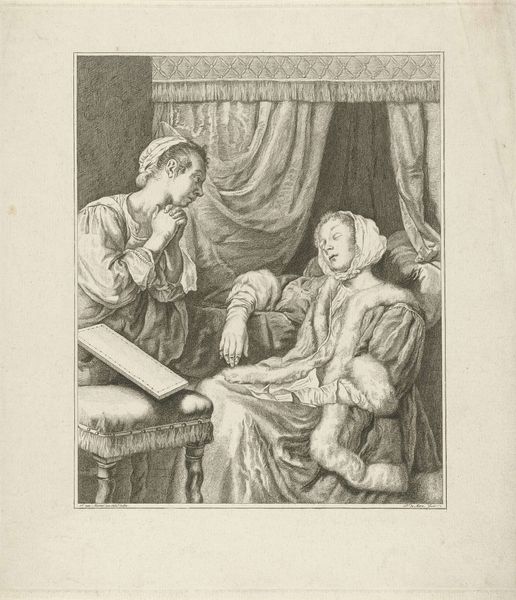
Ontwerp voor vignet van het Geneeskundig Genootschap te Antwerpen 1760 - 1835
0:00
0:00
drawing, pencil, charcoal
#
portrait
#
pencil drawn
#
drawing
#
pencil sketch
#
charcoal drawing
#
figuration
#
pencil drawing
#
pencil
#
portrait drawing
#
pencil work
#
charcoal
#
history-painting
#
academic-art
Dimensions: height 91 mm, width 113 mm
Copyright: Rijks Museum: Open Domain
Editor: This drawing, "Ontwerp voor vignet van het Geneeskundig Genootschap te Antwerpen," by Andreas Bernardus de Quertenmont, made sometime between 1760 and 1835, is currently held at the Rijksmuseum. I am really struck by the rendering of fabric and texture achieved purely through pencil and charcoal. What stands out to you? Curator: What intrigues me is the means of its production as an 'ontwerp' – a design. It prompts the question: for what purpose? Designs were often commissioned, indicating a patron and a network of labor involved in its creation. It highlights how art production served specific social functions, in this case a medical association in Antwerp. Can you speculate on the intended function, given that it is a medical association's design? Editor: Perhaps the image symbolizes the care the association provides? Given the period, images were so crucial to the promotion of specific ideals. What might this tell us about their place in society at that time? Curator: Exactly. And that's where materials become critical: drawings like this could be easily reproduced via printmaking. Cheaper prints meant broader circulation. What impact might it have had on the popular understanding of medical care during this period? Editor: It probably legitimized the association. It’s also amazing how the artist captured so much detail using such basic materials, the exploitation of charcoal and pencil to create texture gives them almost a life of their own. Curator: Precisely. By examining the labor, materiality, and mode of consumption of these designs, we gain insights beyond traditional aesthetic interpretations and deeper into social practices. This artwork acted as a functional tool that had an immense amount of purpose within this historical organization, more than just the presentation of aesthetics. Editor: I never considered this design’s function beyond the pure aesthetic appeal, I have gained a new understanding about social practices! Thanks!
Comments
No comments
Be the first to comment and join the conversation on the ultimate creative platform.


